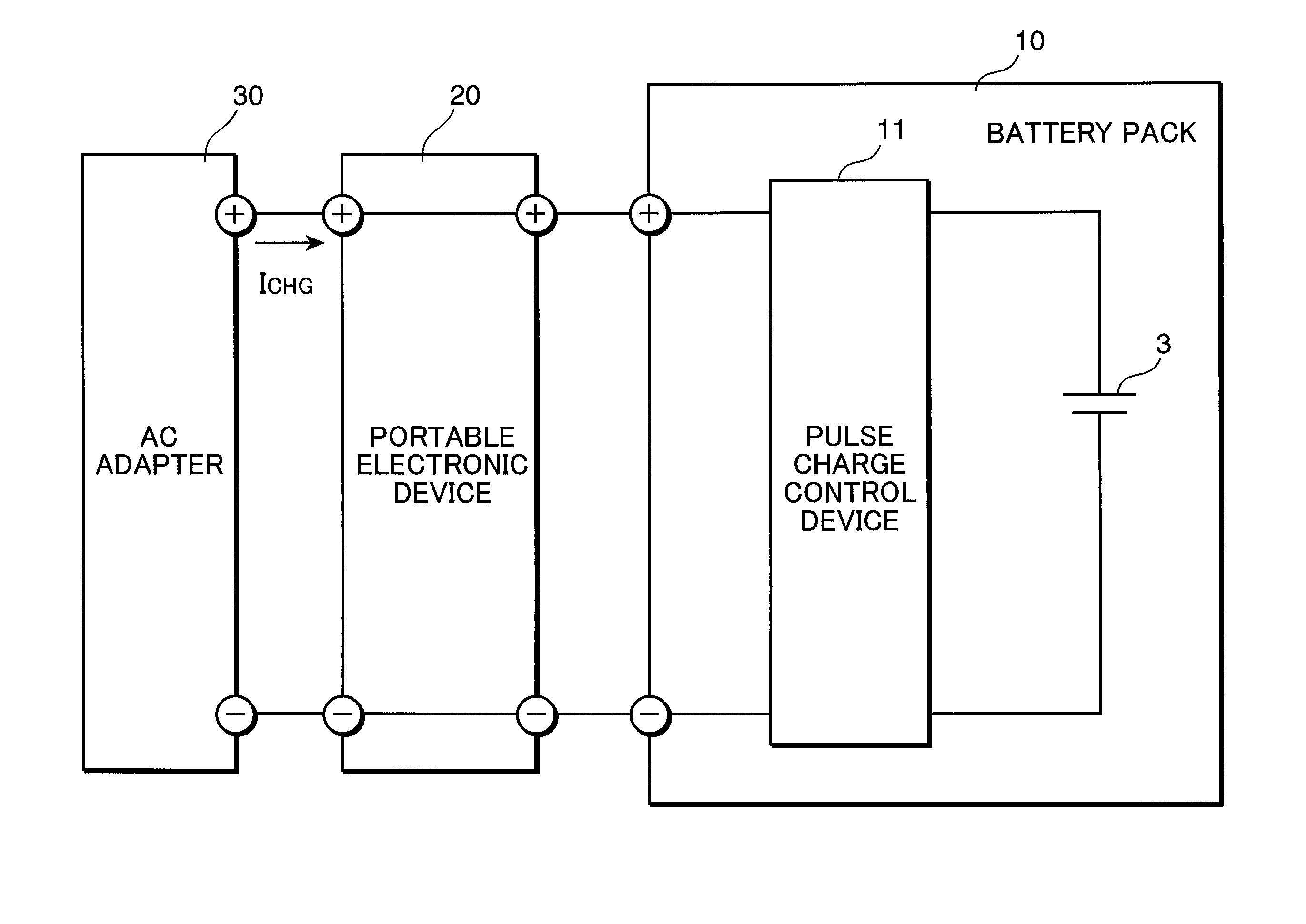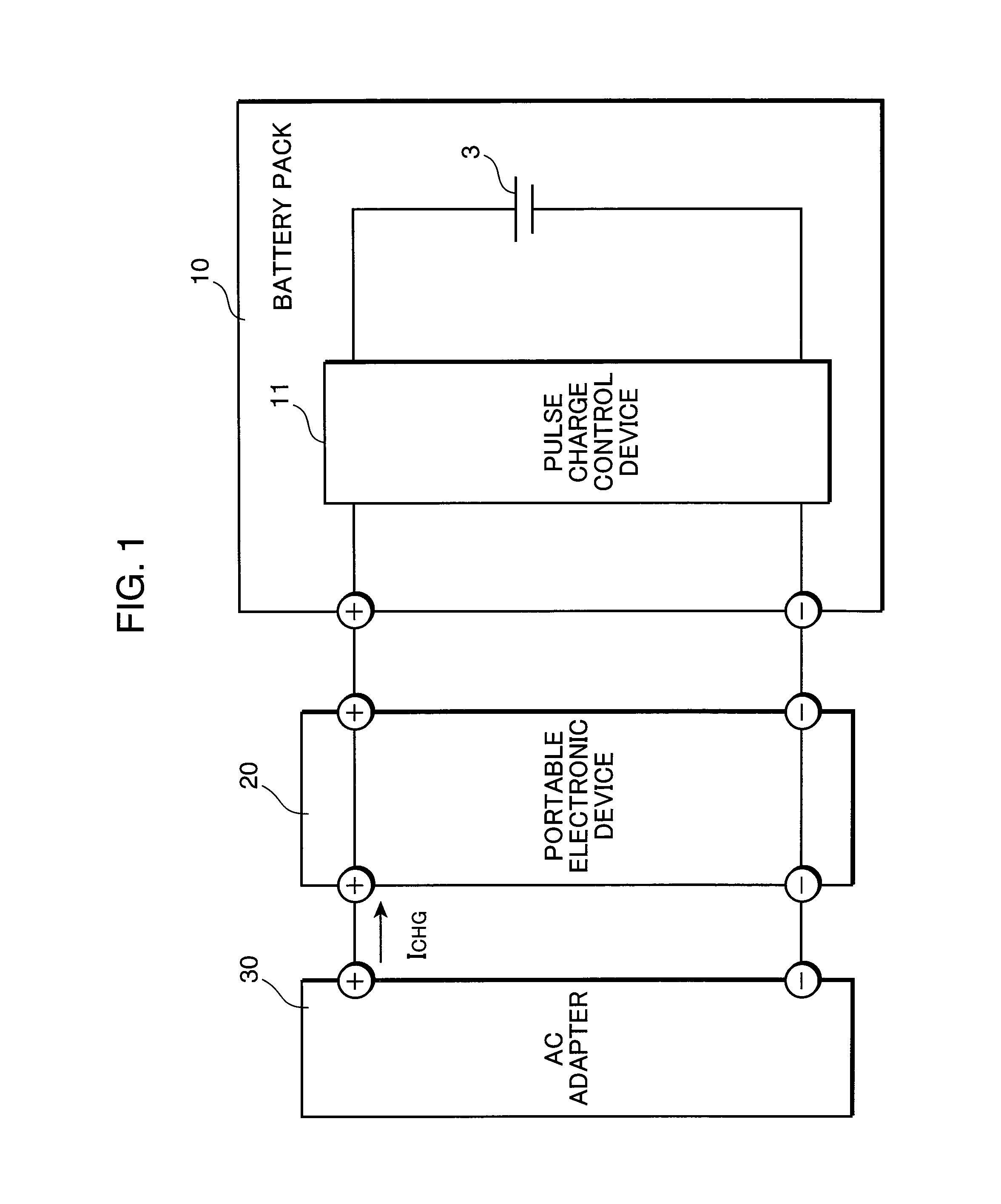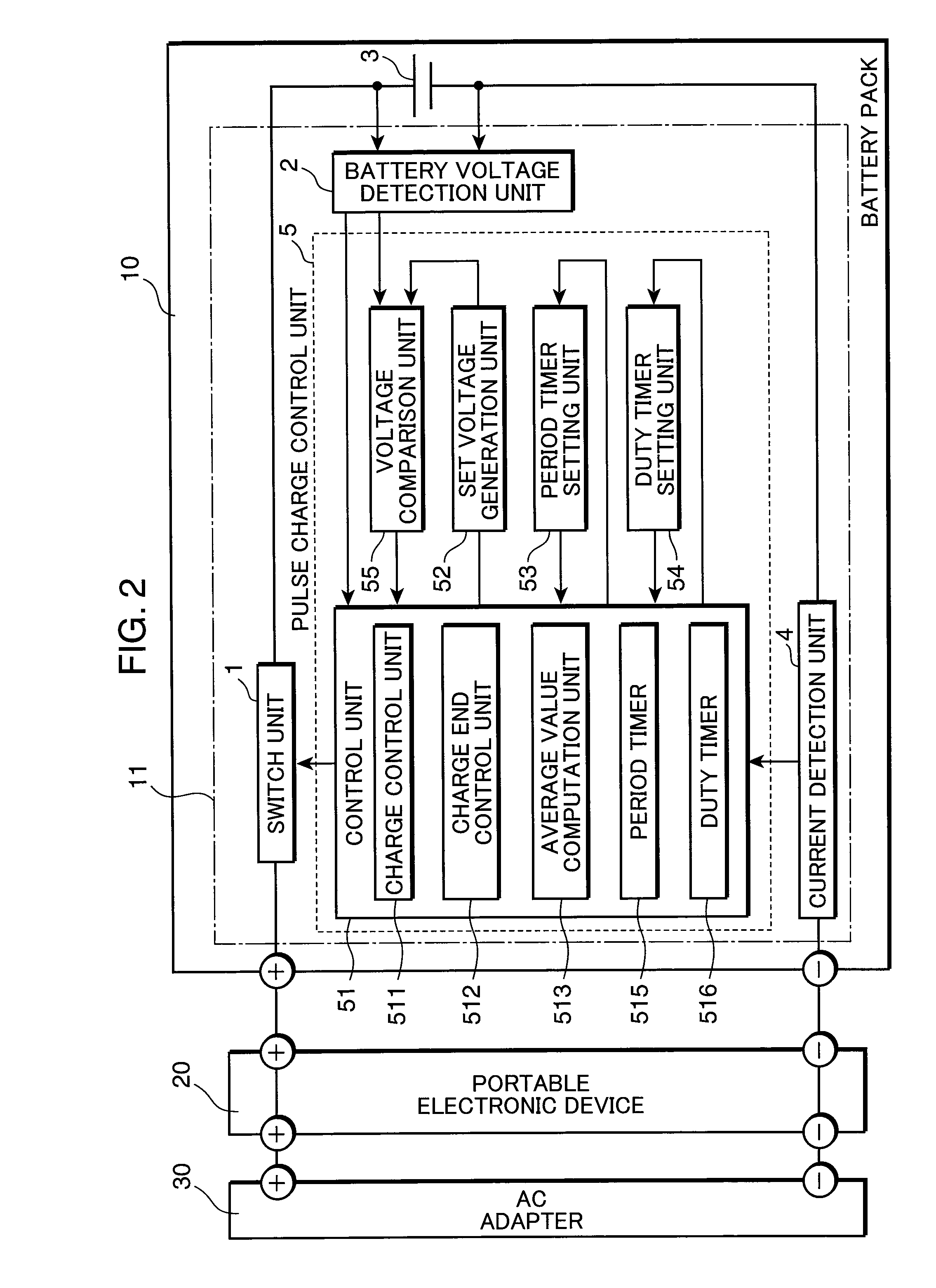Pulse charge method for nonaqueous electrolyte secondary battery and pulse charge control device
- Summary
- Abstract
- Description
- Claims
- Application Information
AI Technical Summary
Benefits of technology
Problems solved by technology
Method used
Image
Examples
first embodiment
[0019]FIG. 1 is a block diagram illustrating an example of schematic configuration of a battery pack 10 that includes a pulse charge control device using the pulse charge method in accordance with the present invention. Referring to FIG. 1, the charging is implemented in a pulse charge control device 11 located inside the battery pack 10. An AC adapter 30 shown in FIG. 1 has a stable characteristic as a power source for charging and has a capacity of supplying a charge current ICHG as a constant current.
[0020]A nonaqueous electrolyte secondary battery 3 is connected to the pulse charge control device 11. Various nonaqueous electrolyte secondary batteries, for example, a lithium ion secondary battery can be used as the nonaqueous electrolyte secondary battery 3.
[0021]The AC adapter 30 is connected to a portable electronic device 20, and the portable electronic device 20 is connected to the battery pack 10. The portable electronic device 20 can be any from a variety of electronic devi...
second embodiment
[0055]FIG. 4 is a detailed block diagram illustrating the second embodiment of the present invention. In the configuration shown in FIG. 4, the pulse charge control device 11 shown in FIG. 1 is constituted by a switch unit 1 that ON / OFF switches the charge current, a battery voltage detection unit 2 that detects a battery voltage, a current detection unit 4 that determines that the AC adapter 30 has been connected to the charge current, a battery temperature detection unit 6 that detects a battery temperature, and a pulse charge control unit 5 that conducts the entire control of pulse charge. The pulse charge control unit 5 is constituted by a control unit 51 that controls the below-described components, a set voltage generation unit 52 (set voltage setting unit) that generates a predetermined set voltage as a reference voltage on the basis of control conducted by the control unit 51, a period timer setting unit 53 that stipulates a charge period, a duty timer setting unit 54 (duty ...
PUM
 Login to View More
Login to View More Abstract
Description
Claims
Application Information
 Login to View More
Login to View More - R&D
- Intellectual Property
- Life Sciences
- Materials
- Tech Scout
- Unparalleled Data Quality
- Higher Quality Content
- 60% Fewer Hallucinations
Browse by: Latest US Patents, China's latest patents, Technical Efficacy Thesaurus, Application Domain, Technology Topic, Popular Technical Reports.
© 2025 PatSnap. All rights reserved.Legal|Privacy policy|Modern Slavery Act Transparency Statement|Sitemap|About US| Contact US: help@patsnap.com



